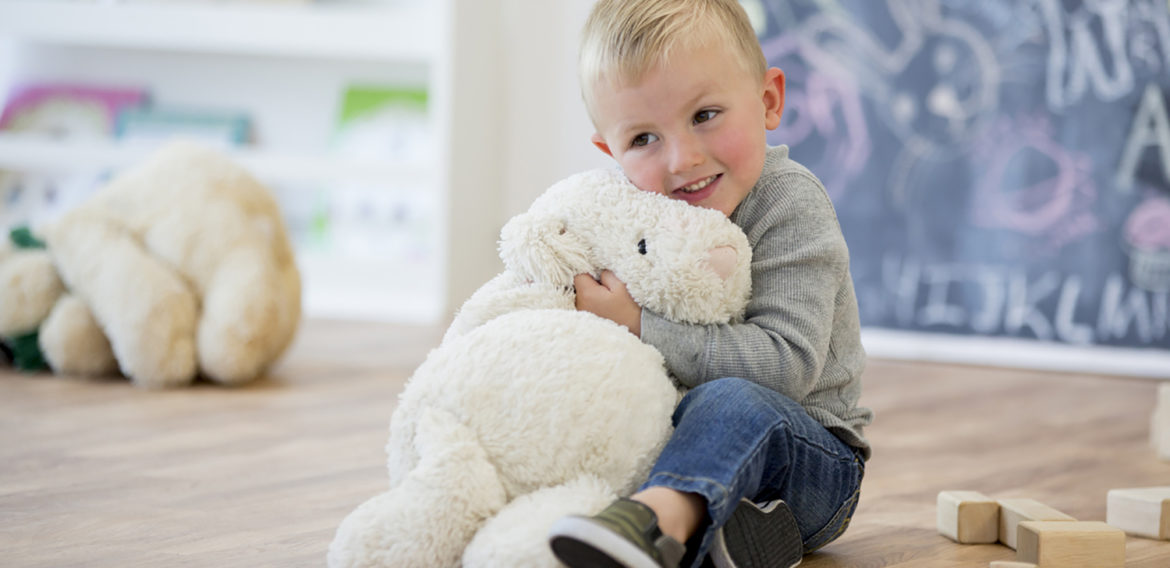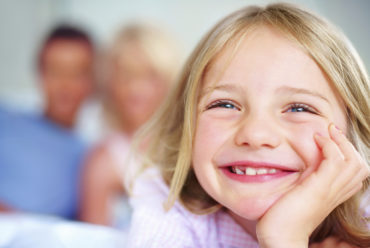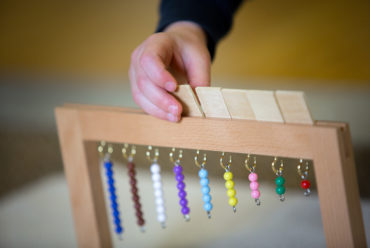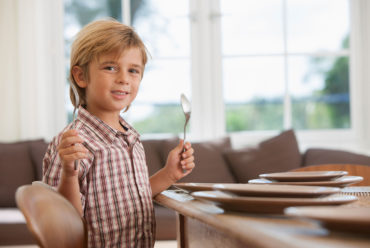A Montessori Home: Organization, Storage, Toy Rotation
by Beth Wood
I frequently get asked about what living a minimalist life looks like with two kids. So I thought I would share some of my ideas. Before I start, I wanted to state that living as a minimalist looks different to everyone. Our way of doing it may not be right for another family, but it is definitely right for us.
Most importantly, living minimally also means living mindfully. We think about our home and lifestyle in a very concrete way. We think about what we want to convey to our children. What do we want them to remember about their childhood? What do we want them to remember about us? Thinking about those questions is the first step to decluttering your life.
Step One: Self Organization
The most important part of the Montessori Prepared Environment is the adult. The entire environment depends on us as the guide to observe and prepare it to fully meet the needs of the child. Here is a sample of a week’s pages in my bullet journal. To ensure privacy, I took picture of an upcoming week before things get scribbled in and filled up. Keeping a bullet journal is directly linked to my own mindfulness, and therefore, my sanity. This little book and our big wipeable monthly calendar on the fridge are where we write everything down.
Step Two: Material Storage & Organization
This is it. As you can see, there isn’t a lot. This is where some of the minimalism comes in. The most common misconception I see on Facebook and Pinterest is that Montessori is about the materials or the stuff. That couldn’t be farther from the truth.
Montessori is actually about the child. The pedagogy was originally designed for people who had nothing. Not having everything is a very good lesson to teach not only our children, but also (perhaps more importantly) ourselves.
Another misconception is that there is a difference between toys and materials. This often allows for the excuse that we need “all the things” because they are learning materials. Yet, in Montessori, learning is joyful work and purposeful play. Your child sees no difference between a material and a toy.
Your child doesn’t need fancy teaching time clocks, balancing beams, sensory boards etc. Instead a few good quality materials offering a range of experiences are key.
The same rule applies to “shelf work” as it does in practical life. We don’t give them pretend food, we let them chop carrots. Why then would we give them pretend experiences? Instead, bundle them up and go out for jumping, running and balancing. Allow your child to explore different textures, sounds, tastes and smells within your home and community.
Independence is a cornerstone in Montessori. When choices or access become overwhelming, independence suffers. The photo above is Quentin’s closet in his room. The IKEA Trofast system has worked well all these years. There is a little video of him using it at around 18 months here. There aren’t many clothes, but they are all ones he loves. The top yellow bin stores pj’s, the middle one holds shirts, and the bottom one pants. The basket below stores socks and underwear. How do we keep this space minimalist? The answer is simple. We don’t buy more clothes than he needs. He has four sets of pj’s, four short-sleeved shirts, three long-sleeved shirts and three to four pants. Not having a large wardrobe means we can spend more money on the pieces he has, allowing us to choose sustainable, healthy options.
Step Three: Prepare Purposeful Environments
Quentin’s room has remained the same since we switched it from a crib. Like all things Montessori, items and areas have a distinct purpose. Bedrooms are for rest. He has a bookshelf by his reading area tipi, and his wooden barn is stored here but that’s it. There are no toys or materials in this space. It is light and airy and cosy. Perfect for relaxing.
This area (all one space) shown above is on the first floor of our house. It has been his Montessori area from birth. The area houses his open ended and gross motor play items (shown in the picture below), work table, work mat, Montessori shelves and art table and shelves (seen behind the shelves in first pic). It has changed so much over the years but also remains the same. Everything has a purpose and a place. This is where he keeps 100 percent of his materials. There is a wall map to the left of the slide. His cube shelving holds every material out at the moment. He has both learning materials and open ended play materials in this space.
I often see parents asking about how many materials to have out at one time and when to rotate them. I also see the answers. Some say two weeks, others say four. However, the true Montessori answer is as always follow the child. If your child doesn’t use a material, observe to see why. Perhaps it is either too difficult or easy. Maybe they are bored. Careful observation of your own child will tell you when you need to rotate items.
In truth, our shelves rarely get rotated. We do our monthly nature study and that tray of items gets changed sometimes weekly. However, at four-years-old, it is Quentin who rotates the shelves. If he is tired of a puzzle, he takes it off the shelves to the storage cabinet (shown above earlier) and switches it out. If he wants something out of his science box or geography box, he goes and replaces what is out with what he wants. Sometimes I will rotate something if I see a particular interest, and I will definitely take something out if it is no longer challenging such as his Montessori Blue Language Series, but mostly it’s him.
How do we make minimalism work in this space? We don’t purchase many items, and we don’t have multiple items that do the same purpose. Not having many items means that all items we have get a lot of use. When we do purchase or make something, we are mindful of its purpose and choose good quality over quantity.
Here is his kitchen space.
I feel this particular part of our home doesn’t need any more explanation here. It is purposeful, neatly contained and beautiful. If you are interested in learning more about our kitchen space, there is lots of information under the “In the Kitchen” category on my website and loads of videos and pictures on Our Montessori Life’s Instagram page.
Lastly, here is our living room.
Like our media room, our dining room and my office, there are no materials or toys here. This space is intended for gathering as a family and with friends. I don’t leave my bits and pieces of crafts and hobbies here, and we all respect each other by keeping our own personal things in their prepared spaces. Implementing this early on has meant that all of us as a family are mindful of bringing things into this space and the other shared spaces of the house. Because of this, these spaces don’t feel cramped with kids stuff. It doesn’t get messy, and it invokes a feeling of calm for all who use these spaces.
Staying organized and living minimally seems like an impossible task, but it really isn’t.
Here it is in a quick overview:
- Keep in your house only what you need and the things that bring you immense joy. Get rid of everything else.
- Organize yourself and your spaces so that you are prepared, calm and having to clean less.
- Most importantly, the number one, easiest thing you can do is to simply put down your wallet. That’s it. That’s all it takes. Your house won’t be cluttered and your kids won’t be entitled if you simply follow this one step.
Because when it comes down to it, your kids don’t want your stuff.
They want your time.


















No Comments